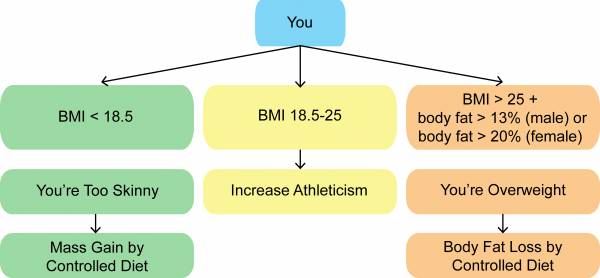The topic of diet has been known to lead to arguments that could almost be described as religious. While I don’t think anyone is going to commit a jihad over whether or not to eat paleo, you know exactly what I mean if you’ve ever tried to steer people in a better direction with their diets. From crazies like Food Babe, to people who scream about fat shaming, to those who seem to be on a permanent bulking cycle, and everyone in between – talking diet makes people crazy.
Like most things in health and fitness, the problem stems from a simple fact: you were lied to. Lies form the basis of the fitness industry. Included among them are ideas like needing to join a big gym that has an army of treadmills and two of every machine created in order to get in shape. Or that you need to consume four different protein concoctions to help burn fat. Most of it is just designed to sell things – usually supplements or gym memberships.
The truth is simple: the quality of your diet dictates your body composition.
A Growing Epidemic
These lies have propagated because the modern world is getting fatter and fatter. The rate of obesity has increased 214 percent since World War II. Three out of five people are overweight, and one in five is obese. That leaves only one in five with a healthy body mass.1
Like everything in our modern world, we have access to a lot of information about diet. Probably too much information, because the reality is, diet isn’t that difficult. The biggest problem is that many people wrongly interpret their needs. Figuring out the type of diet you need starts with an honest assessment of where your body composition is right now.
If you’re one of the five who isn’t overweight or obese, congratulations. Your task is to train the house down and increase athleticism. Make yourself as strong as you can while keeping your body weight in a healthy range.

Which category do you fall into?
You’re a Ticking Time Bomb
For the other four out of five people, listen up. Your body composition is indicative of your overall health. If it’s too high, your system is under extra pressure. Sooner or later you will suffer some kind of problem. Whether that is diabetes, a heart attack, or knee problems from being overweight, I don’t know. But I do know that when the odds are against you, the house always wins. So sort it out now. If you are overweight, you don’t need another bulking cycle. Nor do you need a strength cycle. You need a weight-loss cycle.
This is where that information overload becomes a problem. There are so many weight-loss programs to choose from – Zone, paleo, vegan, Atkins, Lemon Detox, Jenny Craig, Weight Watchers, Buddhist, Kosher, Body for Life, South Beach, Grapefruit Diet, Israeli Army, gluten-free, ketogenic, alkaline, Blood Type, intermittent fasting, and more.
And the weird thing is, they’ll work. Maybe. The one factor that determines success on any ideal eating plan is compliance. It’s easy to write down a New Year’s resolution that says you’ll finally get a healthy body composition this year. But actually eating the salads and doing the food preparation ahead of time is much harder.
5 Steps to Get Your Body Composition Under Control: 1. Get Rid of Junk Food
“I’m having a hard day. I deserve a beer.” What a complete load of crap. Food isn’t a reward system for showing up for work and doing your job. Nor is it a form of self-medication to deal with your idiotic boss. If you want to be an athlete, food is your fuel. If you want to rev your engine hard, then you need to use quality fuel.
That means fast food and highly processed snack foods need to go. Alcohol too, for the most part. Replace calorie-containing beverages with water. At this stage, what you replace these things with hardly matters, as long as you replace them with actual food.
5 Steps to Get Your Body Composition Under Control: 2. Minimize Carbohydrate Intake
Don’t get rid of your carbohydrate intake all together. That’s like trying to run your race car on fumes. Carbs fuel hard efforts in training and help keep your system running properly.
If weight loss is your goal, be mindful of timing. The best time to take carbs is post-training when the body is primed to store the glycogen gained in the muscles rather than as excess body fat.
5 Steps to Get Your Body Composition Under Control: 3. Eat More Salads and Vegetables
The root of this whole conversation is health, so you should be concerned about how many vegetables you get every day anyway. At Read Performance Training, we tell our clients to eat a minimum of four cups of vegetables and one piece of fruit daily.
5 Steps to Get Your Body Composition Under Control: 4. Add Daily Walking
Low-intensity activity, such as walking or easy cycling, won’t burn up the small amount of muscle tissue you already have. It also won’t leave you flat and unable to repeat it the next day due to soreness. I watched someone lose 100lb in a year with 10,000 daily steps as the cornerstone of the program, so I can attest to how well it works. For myself, I am always at my leanest when I get in daily walks.
5 Steps to Get Your Body Composition Under Control: 5. Add Resistance Training
This is actually the easiest of the five, which is why I’ve placed it last. For many people, the hardest part about weight loss is preparing meals and eliminating bad food choices. Daily long walks can also seem difficult for those who don’t believe they have time. If that is the case, I suggest reading Rob McDonald’s time audit article for a reality check.
Lifting weights, on the other hand, is easy. You show up, work hard for an hour or so, and then you’re done with it for 24 hours or more.
Undoing Damage Takes Time
The one piece missing from the four points above is hunger. I mean actual physical hunger. It is perfectly fine to be hungry all day long. Learn to deal with it. This is the price you pay for having not been hungry at all for however long you’ve been overweight.
Remember, you are covered in excess energy stores, and the only way to get at them is to be in a caloric deficit. There are no secrets, just the constant application of basics over enough time to get the results you want.
You’ll Also Enjoy:
- How Strength Levels Affect Work Capacity and Body Composition
- How Much Overhead Are You Carrying?
- The Intelligent Athlete’s Guide to Fueling Performance
- New on Pulse Beat Fit Today
References:
1. Bird, B. “How Much Have Obesity Rates Risen Since 1950?” LiveStrong.com. Demand Media, Inc., 26 May 2011. Accessed 15 Jan. 2016.
Photos courtesy of Jorge Huerta Photography.






